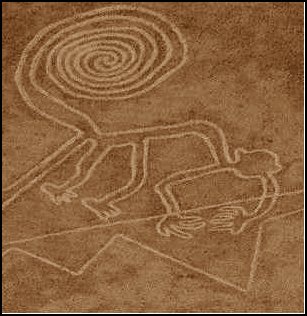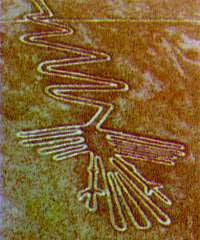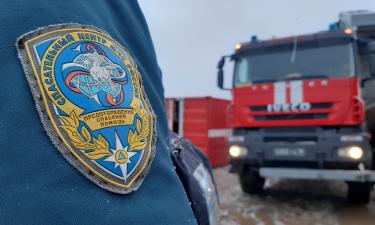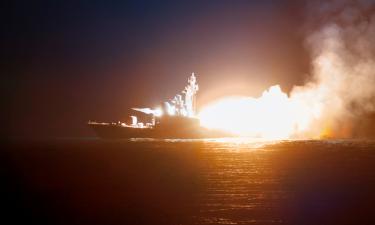Peruvian desert still keeps the mystery of its Nasca lines
The Nasca (Nazca) desert in Peru has earned the reputation of the most enigmatic picture book in the world
No other place in the world can stir up imagination and curiosity of scientists, mystics, and common people alike in such a way. No other place in the world gave rise to hundreds of rumors and speculations. The place is called the Nasca desert. It is located in Peru. The so-called Nazca Lines are among the most wonderful and inexplicable evidence of an ancient civilization that was totally different from our civilization. Despite painstaking research conducted by many scientists of note, Nasca remains “the most enigmatic picture book in history of mankind.” 
The lines and drawings of the mysterious desert were discovered only in 1927 after the first airplanes began flying in the Peruvian sky. In 1939, the American professor Paul Cosock was flying in his light aircraft over the desert in the Rio Grande valley. He could hardly believe his eyes when he saw a giant stylized picture of a bird down below in the desert. A line that seemed incredibly straight was drawn next to the bird. The line cut through the irregularities of the relief and hid behind the horizon. Later more lines were found in the desert. Some were set in a parallel pattern, others formed geometric and other figures measuring from 60 to 250 meters. One could see a giant spider, a monkey with a spiral-like tail, a whale, a dog etc. The top attraction was drawn on a gently sloping side of the mountain. It was a giant man wearing heavy boots, his head was big and his round eyes would befit an owl. And his arm was raised as if in greeting.
It took years to study the phenomenon. The unusual place attracted extraordinary characters. The eccentric Erich Von Daniken, the author of the well-known “Memories of the Future,” claimed that Nasca was a refuel station for intergalactic spaceships. Jim Woodman, an aeronaut, narrowly escaped death while performing a dangerous experiment to prove that ancient Peruvians could fly balloons. Maria Reihe, a mathematician by profession, became the most striking symbol of the Nasca desert. Equipped with a simple sweeping brush, the woman had been sweeping the desert clean for more than 50 years. She was apparently doing that in an attempt to unravel the mystery of the red sands. The desert became, without doubt, her destiny.
Maria first arrived in the desert along with the discoverer of mystic lines Paul  Cosock. She worked as an interpreter for him. She stayed on location when the researchers went back to the United States. Maria devoted her life to the study of strange lines. Her daily work was titanic and she did not get paid for doing it. She spent hours hanging overboard the plane in a makeshift rope basket while photographing the Nazca lines and drawings at the risk of her life. Thanks to her immense persistence, the desert lines were preserved and finally granted protection by the Peruvian government. Her contribution to the study of ancient culture can not be overestimated.
Cosock. She worked as an interpreter for him. She stayed on location when the researchers went back to the United States. Maria devoted her life to the study of strange lines. Her daily work was titanic and she did not get paid for doing it. She spent hours hanging overboard the plane in a makeshift rope basket while photographing the Nazca lines and drawings at the risk of her life. Thanks to her immense persistence, the desert lines were preserved and finally granted protection by the Peruvian government. Her contribution to the study of ancient culture can not be overestimated.
The Peruvians called her the “mother of the desert.” However, the desert never revealed the mystery to its most ardent devotee.
Subscribe to Pravda.Ru Telegram channel, Facebook, RSS!





